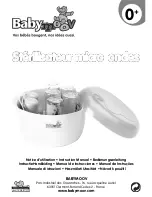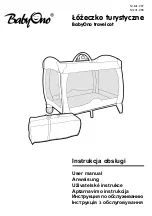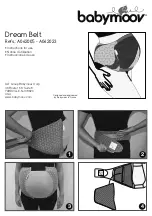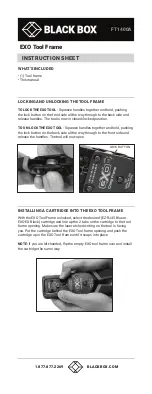
Manual
5 Maintenance, Cleaning, Storage
Dirt deposits on the junction and the glass membrane
can lead to both a sluggish response and to measure-
ment errors.
Use suitable agents to clean the sensor:
Water-soluble
impurities
Water
Grease, oil
Warm water with household
detergent,alcohol
Lime
Acetic acid or
0.1 mol/l hydrochloric acid
Protein
Pepsin/hydrochloric acid
solution
Note:
Never wipe the sensor with a dry cloth as it
may then be unusable for some time due to static
charging.
When you do not use the sensor, store it with the wa-
tering cap attached. It should be filled with 3-molar
KCl solution (ZU 0960).
6 Specifications
Measuring range
pH 2 ... 13
Temperature
-5 ... 80 °C
Junction
Open junction
Electrolyte
Polymer
Sensor connector
Memosens (MS)
Connector material
PPS/PVC
Body material
Noryl (PPE)
Temperature detector
NTC 30 kΩ
7 Package Contents
•
Sensor
•
Instructions for Use
8 Disposal
Observe the applicable local or national regulations
for disposal.
SE 104-MS
Instructions for Use for the SE 104-MS pH Puncture Sensor
1
Sensor connector (Memosens®)
2
Gasket for Portavo quiver
3
Nameplate
4
Body
5
Junction
6
pH glass
Read these instructions for use, observe the Spe-
cifications, and follow the Safety Instructions.
The SE 104-MS puncture sensor is equipped with
Memosens technology. The benefits are a safe func-
tion due to perfect galvanic isolation, digital data
transmission and an integrated sensor diagnostics,
among others. The connection is insensitive to dirt
and humidity. The calibration data, operating time,
sensor designation, and serial number are stored in
the sensor head.
1 Safety Instructions
Make sure that the sensor is without visible mechani-
cal damage. Use the sensor for the intended purpose
only.
2 Intended Use
The sensor is designed for simultaneous measure-
ment of pH and temperature in industrial processes,
particularly in semi-solid materials. Observe the per-
missible operating conditions.
3 Installation and Commissioning
•
On unpacking, check the sensor for mechanical
damage. Report any damage to your Knick service
team.
•
Connect the sensor with the Memosens cable and
then connect the Memosens cable to the measur-
ing device.
4 Operation
4.1 Calibrating the Sensor
Calibrate the sensor regularly – ideally prior to each
measurement. The frequency of calibrations is highly
dependent on the required measuring accuracy. Only
use unspoiled buffer solutions (CaliMat) within their
expiry date.
Note:
Calibration buffers are consumables. Use each
buffer solution only once.
Two-point calibration is recommended for the SE
104-MS sensor. Please refer to the user manual of the
meter for further details.
4.2 Measure
In addition to the pH value, the sensor also measures
the temperature. The temperature measurement is
used for temperature compensation of the sensor,
which is a prerequisite for correct pH measurement.
To document the measurement results, you should
specify the measured pH value together with the
measuring temperature.
CAUTION:
Prevent the sensor from hitting hard par-
ticles in the measured medium as this can destroy
the sensor.
4
1
3
2
MEMO
SENS
5
6
Knick Elektronische Messgeräte
GmbH & Co. KG
Beuckestraße 22
14163 Berlin
Germany
Phone: +49 30 80191-0
Fax:
+49 30 80191-200
www.knick-international.com




















